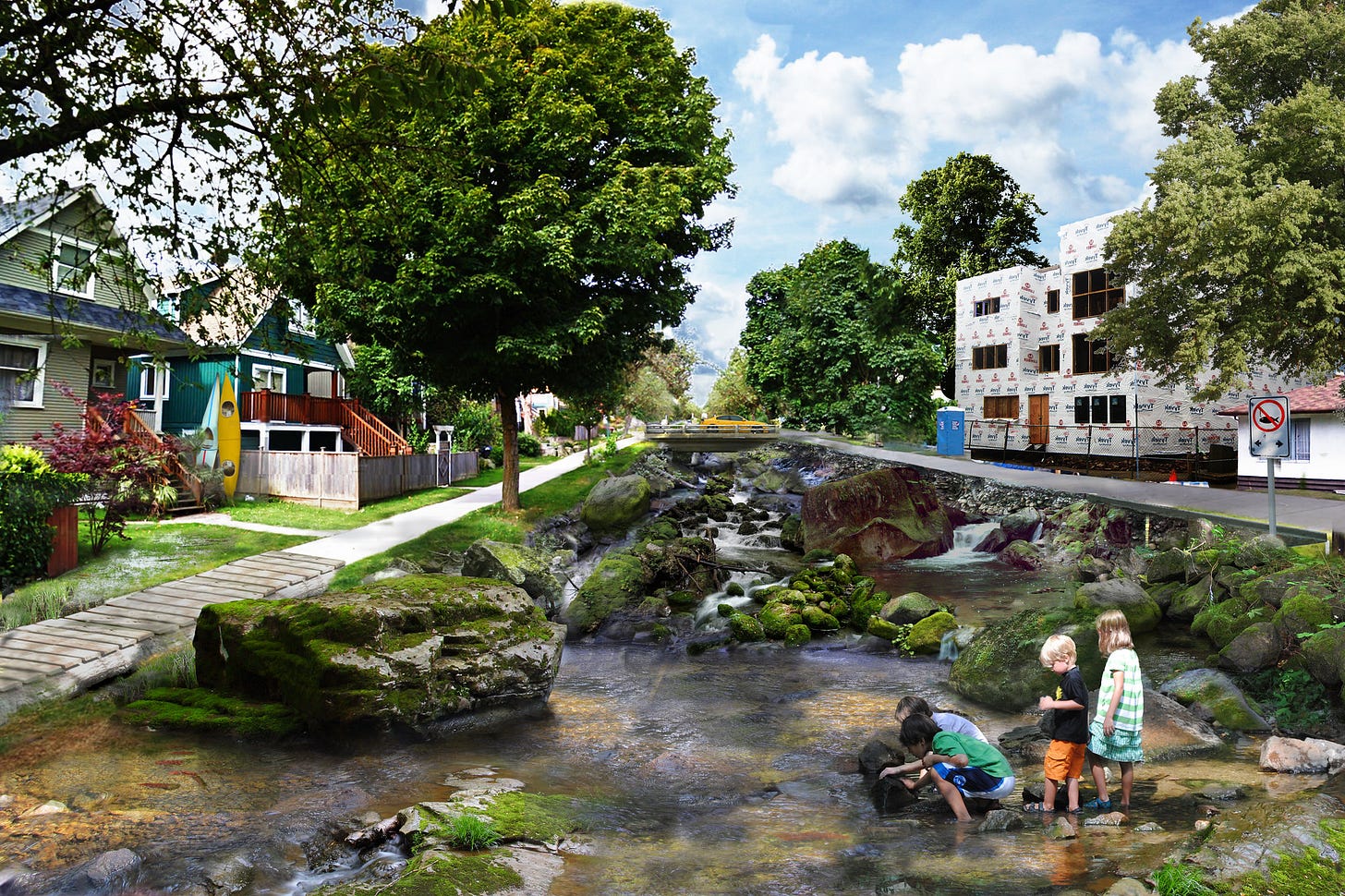Prefigurative Community Building (Part 35)
Mycorrhizal Mutualism and Rewilding: A Power With Approach to Symbiotic Restoration

We Are Already in Relationship
The forest is not a collection of trees. It is a coordination system, a living weave of interdependence, roots, fungi, water, wind, and wolves. Beneath the forest floor, mycorrhizal networks form relationships that sustain entire ecosystems. Trees share nutrients, warn each other of pests, and adjust to stress through fungal bridges. It is not competition that makes a forest thrive. It is mutualism.
In the same way, we cannot rewild ecosystems without rewilding our patterns of coordination. Restoration that replicates colonial or industrial hierarchies, where humans manage landscapes as masters, perpetuates harm. Instead, we must design Power With coordination patterns that center reciprocity, humility, and the agency of more-than-human life.
This guide outlines how to initiate a Mycorrhizal Mutualism or Rewilding project as a Power With formation. It includes practical steps, tools, and links to help at each stage, and highlights real-world examples that show what’s possible when we restore relationships, not just land.
Step-by-Step Guide: Rewilding as Power With Coordination
Step 1: Start by Listening to the Land
Before you act, observe. Walk the area, sit with it through different times of day, listen for patterns, disruptions, absences. Who once lived here, people, species, spirits? What’s still here? What’s missing?
Use Indigenous consultation, species inventories, and local ecological history to understand the system as it was, is, and might be. Approach the land not as a site of intervention but as a collaborator.
Resources:
Step 2: Form a Mycorrhizal Working Group
Invite a small, diverse circle of co-stewards. Not volunteers or employees, but partners. Include local residents, Indigenous knowledge holders, ecologists, disabled naturalists, youth, and artists. The more diverse the web, the more resilient the work.
Practice distributed facilitation: rotate who convenes, use consensus or sociocracy for decisions, and ensure translation and access. Mycorrhizal networks don’t have a central node, they are relational and flexible. Your group should be too.
Resources:
Step 3: Identify Sites of Mutual Restoration
Choose one or more micro-sites in your ecosystem where both human and more-than-human healing can occur. Examples: degraded wetland edges, abandoned lots, damaged forest understories, post-agricultural fields.
Focus on ecotones (the transition zones) where mutualism is most likely to thrive. These are also often neglected by industrial land management.
Resources:
Step 4: Co-Design with the More-Than-Human World
Now you’re ready to plan, but not on your own. Use participatory design processes that include time to study traditional ecological knowledge (TEK), monitor animal movements, and assess fungal or hydrological networks. What would the land choose, if it could speak?
Rewilding should not mean planting what you want. It means partnering with succession, mycorrhizae, pollinators, and unguided ecological processes. Sometimes, it means stepping back altogether.
Resources:
Step 5: Build Reciprocal Infrastructure
Support rewilding with living infrastructure, seed libraries, fungal inoculation hubs, shared tools, eco-sanctuaries, and access corridors for animals and people alike. Use reclaimed or local materials, and ensure co-ownership.
Share stewardship responsibilities and offer multiple ways to participate: gathering, storytelling, documentation, cooking for work parties. Avoid labor hierarchies and ensure energy in is met with care out.
Resources:
Step 6: Document, Reflect, Decentralize
Rewilding is not just planting, it’s patterning. Share your learnings through zines, oral stories, videos, or walk-alongs. Build peer-to-peer knowledge webs rather than institutional reports. Document not just successes but mistakes and adaptations.
Encourage others to start micro-sites elsewhere, with support but without control. This is replication, not scale, and it mirrors how mycorrhizae spread.
Resources:
Two Living Projects that Embody Power With Rewilding
1. MycoRise Up! (Pacific Northwest, USA)
MycoRise Up! is a grassroots, queer-led fungal mutual aid collective focused on soil health, forest restoration, and mycorrhizal education. They inoculate urban tree beds, teach mushroom cultivation for land healing, and redistribute spores as solidarity.
2. Ecotono Urbano (Argentina)
This project transforms forgotten urban patches into ecotones, lush, multispecies corridors that reconnect pollinators, plants, and people. The network uses collective design, school participation, and interspecies observation to regenerate place through care.
https://www.instagram.com/ecotonourbano
Conclusion: Rewilding is Relational Repair
The urgency of the ecological meta-crisis demands we act, but how we act matters as much as what we do. Projects built on Power Over often reproduce the same extractive systems they claim to oppose. But rewilding through Power With principles changes everything.
It invites us to repair our relationships to land, to each other, and to all the unseen lives beneath our feet. It honors mutualism as not just an ecological pattern, but a political and ethical one. It invites us to participate in metamorphic justice, where healing is not top-down restoration but bottom-up, inside-out transformation.
In the end, every fungi-threaded root, every seed that germinates with the rain, every person who finds belonging in a web of care, is part of a new forest, one that remembers how to live again.




You know of the biotic pump theory by Victor Gorshkov and Anastasia Makarieva? Definitely worth checking out. Alpha Lo has an awesome page that has the scientific underpinnings for a more relational understanding of how water cycling within the biosphere generates the weather patterns which can be extrapolated to understand the nature of the “Anthropocene” where human patterns (social, cultural, nutritional, etc) shifted Earths weather systems.
It’s important because it can give us a clue, like how Ali’s work describes, how we can listen to work with ecosystem collapse which is probably going to hit a lot faster than we all can realize.